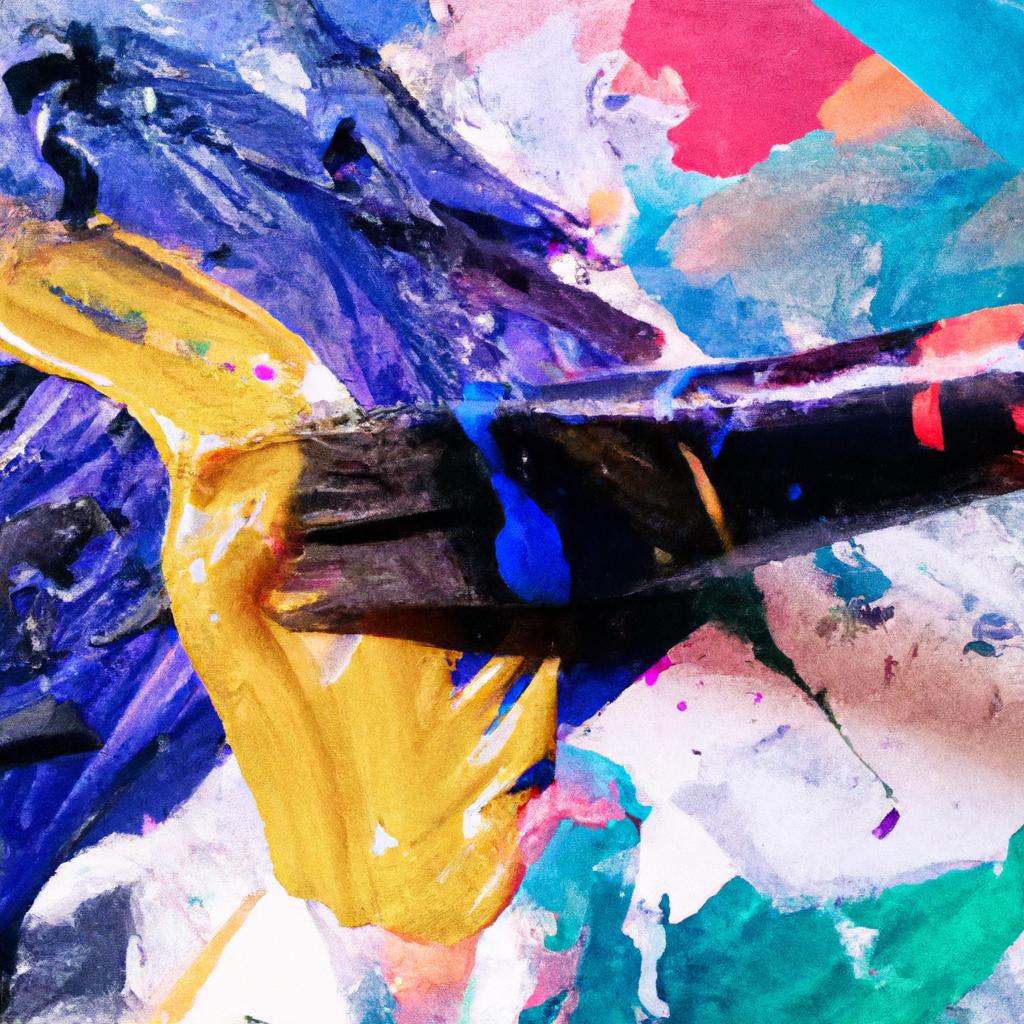What is Underpainting?
Underpainting is a technique used by artists to lay a foundation and add structure to a painting. It involves laying down a base layer of paint composed of thinned out colors prior to working on the main strokes of the painting. This base layer helps set the overall tone and creates an under-structure for the painting. The underpainting process is often used in oil and acrylic painting but can be used in other painting mediums as well.
How Does Underpainting Relate to Creating Dynamic Artwork?
The role of the underpainting is to help create interesting and dynamic works of art. By building up multiple layers of color, you can create an interesting texture that adds depth and complexity to your artwork. With careful planning, you can use the underpainting to manipulate the values within your painting and guide the viewer’s eye around the piece. An effective underpainting can also help enhance the color and lighting effects in your painting.
History of Underpainting
Underpainting, often referred to as an underdrawing, is a technique that has its roots in classical art. It was widely used during the Renaissance period, and has experienced a resurgence in more recent times. The aim of underpainting is to provide a foundation for a painting and give the artist an idea of what the overall image should look like before they begin applying paint.
The process of underpainting can be traced back to the 14th century, when Van Eyck was renowned for using it in his work. Other artists such as Michelangelo, Leonardo da Vinci, Rembrandt, and Rubens, also employed this technique as a way to prepare their canvas for painting. In modern times, the use of underpainting has been revived as a great way to ensure a successful painting.
Techniques of Underpainting
Underpainting is the foundation of any painting and provides structure, depth, and richness to an artwork. To create a successful underpainting, there are various techniques that may be employed. The most common techniques include blocking in, scumbling, and glazing.
Blocking In
The blocking in technique involves laying down broad strokes of colour to define the composition. This is the initial step to creating an underpainting and helps mark the boundaries between light and shadow. Blocking in typically utilizes muted tones, and the paint is applied with a large brush.
Scumbling
Scumbling involves applying thin layers of opaque paint with a dry brush. This technique helps add texture and definition to the underpainting, and can be used to create highlights or shadows. It can also be used to create a more believable sense of depth.
Glazing
Glazing is the final step of an underpainting, and involves adding thin layers of transparent colour. This helps enhance the overall colour palette and blend the other techniques. Glazing creates an artful rendering of light and allows the artist to truly bring out the details of the painting.
Tools & Materials
Creating an underpainting requires some basic tools and materials. Most important is the paint itself – you need high-quality paint with excellent coverage, since you’ll be working as a foundation for your final artwork. Additionally, many artists prefer to use larger brushes for the underpainting stage, since this allows for more freedom and creativity. Some other materials you may consider include:
- Canvas or other painting surface
- Brushes or other painting tools
- Palette knife or other scraping tool
- Mixing palette and cups
- Sandpaper or other abrasive
Be sure to have plenty of these materials available and always have backup plans in case there’s an unexpected issue with your tools or supplies.
Choosing Colors for Your Underpainting
When choosing colors for your underpainting, it’s important to consider the use of color harmony. Color harmony is when two or more colors are combined in a way that creates a pleasing effect. You can choose colors that are similar in tone, such as shades of blues, or you can choose colors on the opposite side of the color wheel to create a more vibrant contrast. By understanding how to use color harmony, you can create an underpainting that will set the stage for your dynamic artwork.
When selecting colors, it’s also important to think about how light affects color. The type of lighting chosen for a painting can drastically alter the shades used during an underpainting. For example, cool light, like sunlight in the morning or evening, will bring out more bluish tones in colors, while warmer light, like candlelight, will bring out more reddish tones. This should be taken into account when selecting colors for an underpainting.
Creating Depth
The goal of creating an underpainting is to add depth to the artwork. By layering different colors and values, it is possible to create a realistic sense of texture and atmosphere. To achieve this effect, artists may use techniques such as blocking in, scumbling or glazing.
Blocking in is done by outlining the main shapes and forms in the painting before adding color. This gives the painting structure and sets the background for further detail. After blocking in, areas can be painted with scumbled layers to create subtle texture and form. Finally, glazes are added to deepen colors and give the painting more richness.
Overall, the key to creating depth with underpainting is to layer colors and values from dark to light. By adding layers of thinned paint, the artist can create a sense of atmosphere and bring their artwork to life.
Progression: Demonstrate a progression from an initial underpainting to a completed painting
An underpainting is the foundation of a painting, and setting this foundation correctly is key to creating an effective finished artwork. As such, it is important to understand how to progress from the initial underpainting to the completed artwork.
The process of progressing from an underpainting to a finished piece can take a variety of forms, depending on the painter’s desired outcome. This could involve adding layers of paint over the initial underpainting, further refining the colors and shapes, or even completely covering the underpainting with different colors until the desired effect is achieved.
Visual examples of this progression can be extremely helpful when understanding the concept of underpainting and its role in creating dynamic artwork. Seeing how master painters have used the technique of underpainting to create their works can provide invaluable insight and inspiration.
The Benefits of Underpainting
Underpainting is a great technique for artists of all skill levels, whether you are just starting out or an experienced professional. There are several advantages to using an underpainting in creating dynamic artwork.
One of the main benefits of underpainting is that it helps lay a strong foundation for the painting. By creating an initial layer of color, texture, and tone, an artist can establish a good base before adding details and finalizing the painting. This helps achieve a more well-rounded and balanced look.
Underpainting also adds depth to a painting, helping create a more realistic effect. By using various techniques such as scumbling and glazing, the painter can play with light and dark tones, adding a three-dimensional element to the artwork. Additionally, through the contrast of colors, an artist can create vibrant and visually stimulating pieces.
Finally, using an underpainting allows the artist to experiment and make mistakes without compromising the finished work. With an underpainting, an artist can afford to make mistakes and have the freedom to explore different techniques and ideas without ruining the entire piece.
Overall, underpainting is a great tool for creating dynamic artwork. It helps to build a strong foundation, add depth, and provide room for experimentation.
Examples:
Understanding how underpainting can be used to create dynamic artwork can be best illustrated through examples from master painters. One of the earliest examples can be seen in the work of Jan van Eyck from the fifteenth century, who used a thinly applied glaze of ultramarine paint over a warm ochre underpainting to create the Virgin’s robe in his painting ‘The Madonna with Canon Van der Paele’. Dutch painter Rembrandt was also well known for his use of underpainting, applying yellow ochre to many of his portraits for the base layer. In the eighteenth century, Francisco de Goya used heavy coats of black paint as an underpainting for his series of humorous cartoons, the ‘Caprichos’, which gave them a rich and dramatic feeling. Modern painters such as John Singer Sargent have also employed underpainting, often using multiple layers of glazes to create depth and luminosity in their works.
Troubleshooting Common Issues With Underpainting
When creating an underpainting, it’s important to keep in mind that it may not turn out exactly as planned. There can be a lot of trial and error involved in the process, and it may take some time for you to get the hang of it. Here are some of the most common issues that arise with underpainting and how to address them:
- Sometimes the colors used in the underpainting can be too strong or overpowering. This can be corrected by diluting the colors with water or white paint to create a less saturated look.
- The underpainting layer can sometimes appear muddied or blurred when painting on top of it. This can be avoided by using opaque paints instead of transparent, or using a small brush with short strokes.
- If the colors used in the underpainting don’t seem to fit the theme of the painting, they can be altered by adding more layers or glazes on top. This will allow you to create the desired color harmony without having to start from scratch.
- If you find that the paint dries too quickly, you can use a medium like Liquin to slow down the drying time. This can be especially helpful when dealing with larger areas or working with detailed brush strokes.
By being aware of these common issues and knowing how to address them, you will have an easier time creating successful underpaintings. Don’t be discouraged if you encounter any difficulties along the way – trial and error is part of the creative process!
Conclusion: The Role of Underpainting in Creating Dynamic Artwork
Underpainting is an essential component of creating dynamic artwork. This technique enables a painter to achieve a strong foundation for their painting and creates a sense of depth. It also provides an opportunity to experiment with color and composition before committing to the final image. By understanding the history, techniques, materials, and other elements of underpainting, an artist can create beautiful and engaging works of art.
For further exploration of underpainting, there are many resources available such as books, websites, and classes. Taking the time to familiarize yourself with the concept of underpainting will help you truly understand what it can do for your artwork, and you may be surprised at the results!
Resources to Aid in Understanding Underpainting
To further your understanding of underpainting, there are vast resources available to you. Many books, websites, classes, and tutorials can help guide your journey into the fascinating world of dynamic artwork. Here are a few resources to get you started:
- Books: “The Art of Underpainting” by John Lovett
- Websites: Proko.com (video tutorials for underpainting)
- Workshops & Classes: Local art centers often offer classes on painting techniques such as underpainting.
comments: 0

